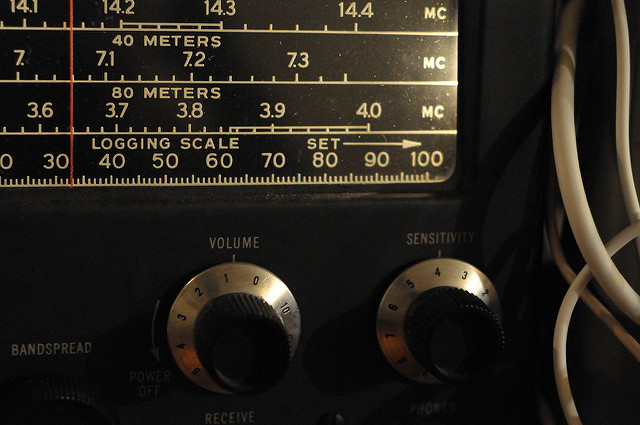
Australia is to end a 75-year history of shortwave broadcasting to Papua New Guinea and the South Pacific. On December 6, 2016, the Australian Broadcasting Corporation announced that, it will end its shortwave transmission service in the Northern Territory and South Pacific on January 31, 2017.
Killing shortwave disregards—disenfranchises—an unknown number of listeners. As broadcasting policy, it’s highly questionable. As strategy, it’s dumb—another bout of recurring Oz amnesia about its South Pacific role, responsibilities and history.
ASPI asked the ABC: How many shortwave listeners does Radio Australia have in PNG and the South Pacific?
ABC spokesman: ‘While there are no firm figures on audiences numbers in these regions, they are understood to be low.’
Q: What percentage of RA’s users in PNG and the South Pacific get the content by shortwave?
ABC: ‘This level of data is not available.’
No evidence-based policy there. In its closure announcement, the ABC expressed future confidence based on no knowledge of present usage:
‘Due to the nature of the technology and the remote locations of shortwave users, it is very difficult to ascertain with any precision the number of listeners who use the service… There is no available data on audience numbers for the regions affected by the closure of ABC International services. The ABC believes that technological advancement has improved accessibility of FM and online services and will negate the impact of no longer offering shortwave services.’
To stress the strangeness: Australia has no idea of the numbers or listeners in the Pacific who’ll be affected when the shortwave transmitters go silent. It has been a vital service for 75 years; with two months notice it’s redundant.
My understanding is the ABC will save $2.8 million annually. Some cash is pledged to build extra FM transmitters in the South Pacific. The sequence is strange: terminate the service immediately and dispense with those listeners. Then start to look at (partial) replacements which may not be ready for several years. Mind the gap!
The ABC calls shortwave an ‘outdated technology’. That’s a developed country view. Other positive descriptors matter in the South Pacific: cheap, low tech, resilient and still widely used, especially beyond the cities.
The ABC statement also described shortwave as a ‘legacy’. In current ABC management-speak, ‘legacy’ doesn’t denote proud history and high achievement. Instead, ‘legacy’ systems are analogue artefacts standing in the way of the digital future. ‘Radio’ is a legacy term; the future belongs to ‘audio’. Shortwave got the legacy treatment.
The ABC’s international service acknowledges Pacific displeasure: ‘The ABC is aware some audiences in these regions have favoured shortwave services. However, the ABC believes that technological advancement has improved accessibility of FM services, in particular via mobile phone receivers negating the impact of no longer offering shortwave services.’
The ABC will shift from Oz-based shortwave transmitters that speak to the whole of the South Pacific (bouncing signals off the ionosphere) to FM transmitters in each country, supported by mobile phone towers. The audio quality of FM is far superior, but range is much more limited. FM is a city service, shortwave has national and international reach. As another cyclone season arrives, the Pacific knows that phone towers and FM transmitters are among the first things to go in a big blow.
In 2014, Radio Australia’s PNG Tok Pisin asked its audience how they were getting the service—80% of the text responses were people listening on shortwave. An 80% shortwave listenership could be an underestimate because many villagers still don’t have mobile phones—no texts from them.
An ABC spokesman told ASPI that current FM transmitters in Port Moresby and Lae ‘cover a significant proportion of the country’s population’, adding: ‘The ABC is looking at three new transmitters to maximise coverage in the main population centres on PNG: Goroka and Mt Hagen in the PNG Highlands and at a strategic location on Bougainville Island. These are locations that will have no service once shortwave is switched off.’
Farewell, the Highlands. Sorry, Bougainville. That’s a lot of Papua New Guineans who’ll have no service on January 31.
The negative regional view is expressed from Cook Islands by the media NGO, Pacific Freedom Forum, which has set up a petition to the ABC to reverse the shortwave decision:
‘There seems to be no logic or connection with realities facing Pacific listeners and audiences across the region who will effectively be cut off from news, information, and life saving information during disasters… It’s a slap in the face for the millions who’ve connected to Australia and to regional news through this service, because they are unlikely to be the ones targeted in the new digital content offerings being touted by ABC.’
The ABC has made a broadcasting choice with strategic implications. The 2016 Defence White Paper claimed for Australia a ‘leadership role’ as the ‘principal security partner’ in PNG, Timor-Leste and Pacific Island Countries. It stressed that it’s ‘crucial that Australia help support the development of national resilience in the region to reduce the likelihood of instability’.
Shortwave offers resilience against political bad weather as well as natural disasters—an angry Rabuka or Bainimarama can’t shut down shortwave signals.
To end on an irony: the ABC board vowed recently to give more priority to the South Pacific. The absent-minded Pacific superpower again forgets its promises.

